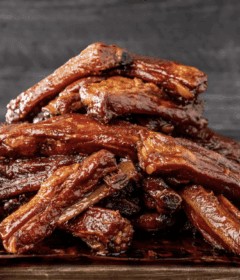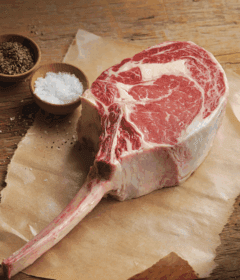The Best Ways to Cook Turkey
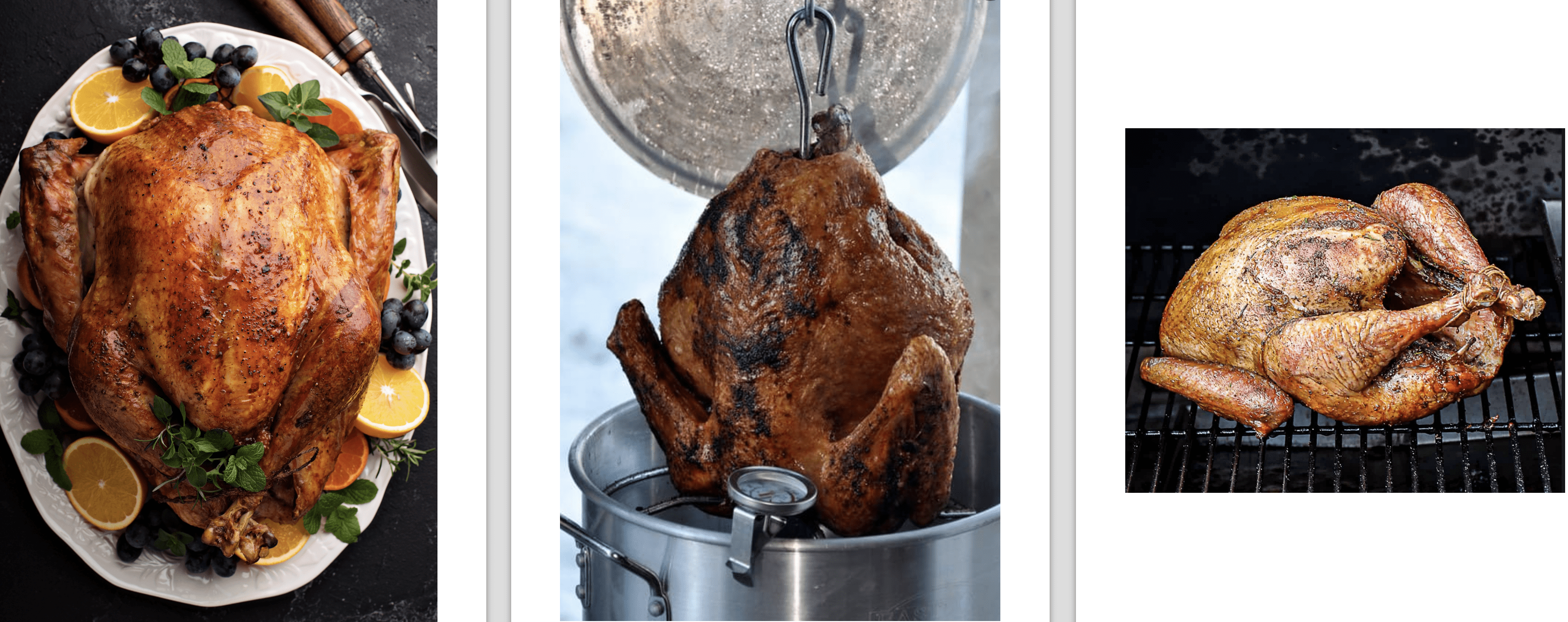
The Best Ways to Cook Turkey Thaw Your Turkey
The ideal place to thaw a frozen turkey is in the fridge, which can take up to a week depending on the size of the bird.
Here’s how long it takes a typical turkey to thaw in the fridge:
4–12 pounds: 1 to 3 days
12–16 pounds: 3 to 4 days
16–20 pounds: 4 to 5 days
20–24 pounds: 5 to 6 days
The Best Ways to Cook Turkey – Oven Roasted
Calculate turkey cooking time and temperature.
The simplest way to figure out turkey roasting times is to calculate 13 minutes per pound at 350°F for an unstuffed turkey (that’s about 3 hours for a 12- to 14-lb. turkey), or 15 minutes per pound for a stuffed turkey.
To some, turkey is a savory, succulent holiday centerpiece—to others it’s primarily a vehicle for gravy.
But turkey can be great (delicious even) if you know the ideal turkey temperature and how to roast a turkey properly—yes, even the white meat.
You don’t need a special recipe if you just stick to these basics.
The Best Ways to Cook Turkey -Air Out Your Turkey
When the time arrives to cook your bird, take the now-thawed turkey out of the fridge and set it on a rack at room temperature for an hour to take the chill off and dry out the skin.
(This can be the same rack you plan to roast your turkey on; there’s no need to dirty another dish.)
Your roasting rack should allow the bottom of the turkey to sit at or just below the top of the pan).
No roasting rack?
A heavy-duty cooling rack set inside a half-sheet pan works too.
The Best Ways to Cook Turkey – Prep Your Oven
Position your oven rack on the lowest rung and set the oven to 350°F.
Some recipes have you start roasting the turkey at a high temperature for a brief period before lowering the heat for the duration.
The belief is that the high heat “sears” the bird and the low heat gently roasts, yielding a bird that’s more moist and succulent, but we haven’t found that this makes a huge difference.
Plus, the skin gets browned very quickly (often too quickly).
Steady heat means not having to check the oven so frequently, leaving you free to do other things, like prep your mashed potatoes.
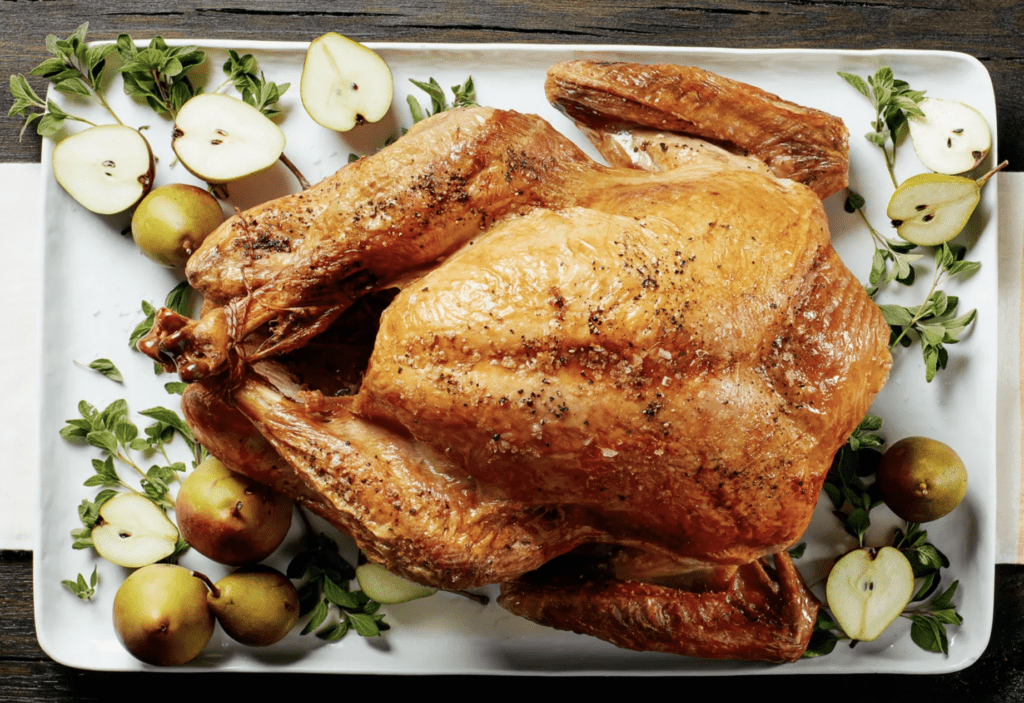
The Best Ways to Cook Turkey – Oven Roasted
Butter Your Turkey
Set your turkey breast side up on the roasting rack and rub room-temperature salted butter—or your favorite flavored compound butter—all over it. (For a 12- to 14-pound turkey, you’ll need about ½ cup (1 stick) of butter.)
Slowly work your fingers under the skin, starting at the neck, being careful not to tear the skin or separate it completely at the large cavity.
Rub most of the butter under the skin, a little inside the large cavity, and the rest over the skin.
Season Your Turkey (if necessary)
For a 12- to 14-pound bird, adding 1½ teaspoons each kosher salt and freshly ground pepper in the large cavity and another 1½ teaspoons each over the skin is plenty.
For kosher turkeys, which are already salted, there’s no need to salt the cavity, but do salt the skin.
If you’ve chosen to brine your bird (via a wet or dry brine) you can skip this final seasoning.
Stuff the Neck Cavity With an Apple —and Don’t Stuff the Main Cavity
Stuffing the neck cavity (not the large cavity) with a halved apple—placing the cut side against the turkey’s flesh with the rounded side facing out—helps buffer the breast against heat and protects it from overcooking.
But don’t fill the main cavity with stuffing—it’ll only slow down your cooking time.
Instead, you can cook the stuffing on the side in a casserole dish.
Add some stock to replace the juices the stuffing would have absorbed in the cavity.
You can also sauté the turkey liver, gizzard, and neck in butter, cut them up (shredding the neck meat off the bone) and add them to your dressing for more flavor.
This will make the stuffing nearly as rich as if it had been baked in the turkey itself (though don’t forget to make a meatless version if you’ve got any vegetarians on the guest list).
Add Some Aromatics
Not stuffing your turkey also means there’s room in the cavity for aromatics, which will add flavor and aroma to the bird and add complexity to the pan drippings used to make gravy.
Try placing onion quarters, celery stalks, parsley, thyme, salt, and black pepper inside the turkey before roasting.
At the same time, add a few halved shallots, sliced carrots, some celery, and 2 cups of water to your roasting pan, under the rack.
The vegetables will perfume the meat and flavor the drippings as the turkey cooks, while the water keeps things from burning.
Cover (and then uncover) the Turkey
Loosely cover the bird with aluminum foil, shiny side out (to deflect heat) at the very beginning.
Tenting with foil keeps the skin from getting too dark too soon.
Remove the foil about halfway through cooking to let the skin brown.
Baste or Otherwise Moisten the Turkey
Traditional recipes call for basting the turkey every half hour to moisten and flavor the bird.
Basting is a simple process that just requires opening the oven and carefully spooning (or using a turkey baster to squirt) the pan juices all over the turkey.
You can add butter to the roasting pan for a richer basting solution, or have turkey broth simmering on the stove to use if the pan juices run dry.
Basting will certainly help the skin brown up nicely, but opinions vary on whether the liquid actually penetrates the skin to moisten the flesh.
And remember: An open oven door lets heat escape, lowering the ambient temperature and lengthening the roasting time.
For these reasons today’s cooking trends favor moistening methods that don’t require basting, such as brining the turkey before roasting, stuffing butter under the skin, or roasting the turkey breast side down (flipping halfway through cooking to get an even brown) so it self bastes.
Alternately, you can split the difference by treating the bird with a brine and/or butter mix before cooking, then basting it every once in a while—say on the hour instead of every 30 minutes—as it roasts.
Calculate Turkey Cooking Time and Temperature
The simplest way to figure out turkey roasting times is to calculate 13 minutes per pound at 350°F for an unstuffed turkey (that’s about 3 hours for a 12- to 14-lb. turkey), or 15 minutes per pound for a stuffed turkey.
Check the temperature about ¾ of the way through that time, and then again every 10 minutes, and roast until the temperature reads 165°F (or 150°F as the case may be; more on that below) when checked at the thickest part of the thigh meat and the thickest part of the breast meat.
If, however, you prefer to roast your turkey at a higher or lower temperature, follow these guidelines.
The following cook times are for unstuffed birds. (Rule of thumb is to avoid stuffed turkeys and instead to bake the stuffing alongside so that it can easily reach a safe temperature).
Cooking Times
If your turkey weighs 8 to 12 pounds, roast it at:
325°F for 2¾ to 3 hours
If your turkey weighs 12 to 14 pounds, roast it at:
425°F for 2¼ to 2½ hours
400°F for 2½ to 2¾ hours
350°F for 2¾ to 3 hours
325°F for 3 to 3¾ hours
If your turkey weighs 15 to 16 pounds, roast it at:
425°F for 3 to 3¼ hours
400°F for 3¼ to 3½ hours
350°F for 3½ to 3¾ hours
325°F for 3¾ to 4 hours
If your turkey weighs 18 to 20 pounds, roast it at:
425°F for 3½ to 3¾ hours
400°F for 3¾ to 4 hours
350°F for 4 to 4¼ hours
325°F for 4¼ to 4½ hours
Check the Temperature of the Turkey
To check the temperature of the turkey, you can use either an instant-read thermometer (which you insert after cooking, as it gives a reading immediately) or a remote food thermometer (the type that has a probe you insert before cooking, which connects to a digital display that sits on your counter).
Either way, insert the probe into the thickest part of the turkey’s thigh, being careful not to touch the bone (which will skew the reading).
The thigh is the best place to test because it takes the longest to cook, but to be on the safe side; it’s smart to also take the turkey’s temperature underneath the wing.
Let the Turkey Rest
When the turkey has reached the right temperature, it’s essential to let it rest for at least 20 minutes before carving.
This gives the juices time to settle into the bird and be reabsorbed.
Carving your turkey up too soon will just allow the moisture to run out, leaving you with dried-out meat on top of a puddle on your cutting board.
If the breast and thighs have reached a temperature of 165°F, it is not necessary to cover the turkey with aluminum foil while it rests.
However, if you’ve taken the bird out at 150°F or you want to hold it for longer, tent it with foil after 20 minutes to make sure it doesn’t cool down too much.
Tented with foil, you can leave the bird in a warm place for up to 40 minutes, which gives you plenty of time to make gravy.
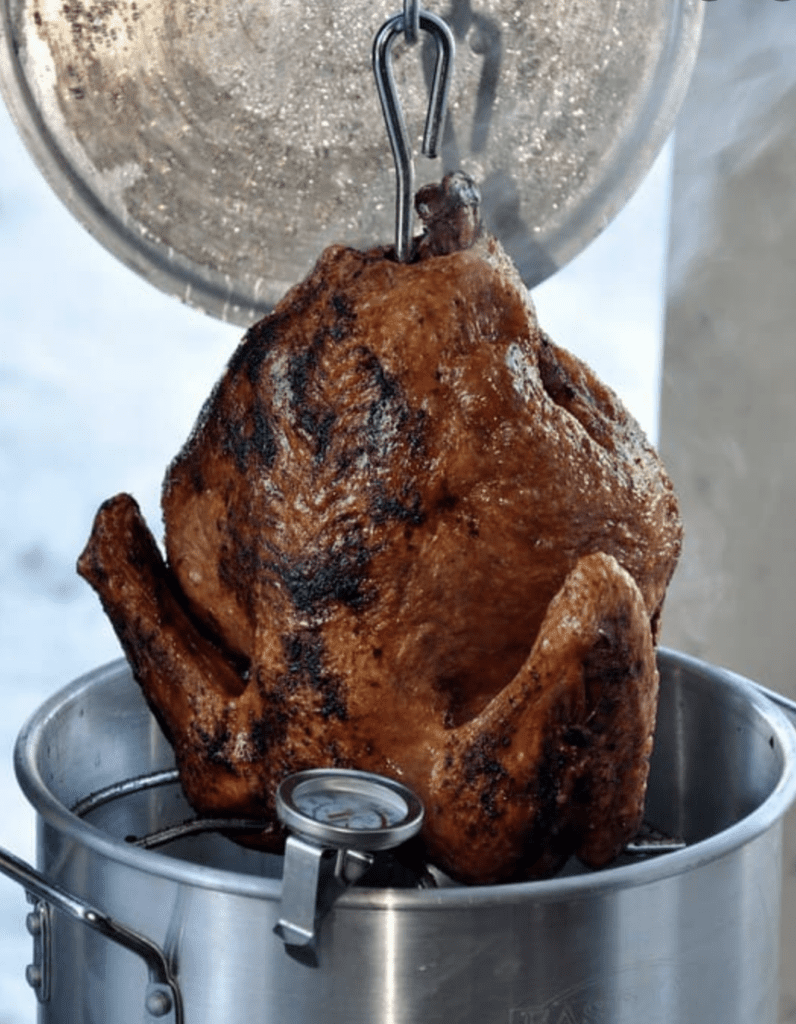
Deep Frying a Turkey
Deep-Frying Turkey Outdoors
Although you’re outdoors, using a propane deep fryer can be very dangerous.
Never leave your deep fryer unattended and follow instructions carefully:
Take the wrapper off of the turkey.
Remove and discard the neck and giblets.
Pat dry.
Deep-fry your turkey on a flat surface, far away from homes, garages, wooden decks, etc.
To determine how much oil is needed for frying, place the thawed turkey in the fryer basket and place it in the fryer.
Add water until the top of the turkey is barely covered.
Remove the turkey, allowing the water to drain from the turkey back into the fryer.
Measure and mark the water line, and use that line as a guide when adding oil to the propane fryer.
Pat the turkey dry with paper towels.
Add oil to the fryer (based on the water line).
Preheat oil in the fryer to 375° F.
While the oil is heating, prepare your turkey with any seasonings, marinades, or injected flavor that you desire.
When the oil is hot, turn the burner off and slowly lower the turkey into the hot oil.
Slowly lowering the basket helps prevent the oil from bubbling over.
Turn the burner back on.
Cook the turkey about 3 to 4 minutes per pound.
The turkey is done when the dark meat is at an internal temperature of 175° F to 180° F and all white meat is at an internal temperature of 165° F to 170° F.
When the turkey is done, slowly lift it from the pot and place it in a pan or on paper towels to drain.
Let the turkey stand for 20 minutes before removing it from the rack or basket.
Deep-Frying Turkey Indoors
Using an electric fryer indoors is a great way to get crispy texture and delicious flavor without braving the elements.
Given the high temperatures, follow instructions carefully:
Completely thaw your turkey, or use a fresh turkey.
Take the wrapper off of the turkey.
Remove and discard the neck and giblets.
Pat dry.
Add oil to the fryer, but do not exceed the maximum fill line.
Preheat oil in the fryer to 375° F.
While the oil is heating, prepare your turkey with any seasonings, marinades, or injected flavors.
Tuck legs.
Once the oil is heated, place the basket in the fryer for 30 seconds.
Remove basket from oil, place turkey in basket. Slowly lower the turkey into the fryer.
The turkey may not be totally immersed in the oil. This may cause the top part of the breast to remain white even though it is cooked to the proper end temperature.
Set the timer and cook the turkey about 3 to 4 minutes per pound.
Cook all dark meat to an internal temperature of 175° F to 180° F, and all white meat to an internal temperature of 165° F to 170° F.
Here’s some help on how to check your turkey for doneness.
When the turkey is done, slowly lift it from the pot and place it in a pan or on paper towels to drain.
Let the turkey stand for 20 minutes before removing it from the rack or basket to carve.
The Best Ways to Cook Turkey – Smoked Turkey
Smoking a whole turkey is easy when using the best smoked turkey recipe.
This turkey recipe can be made on any grill.
Smoking a turkey on an electric smoker works great, as does as gas grill, electric smoker or manual smoker.
Gas Grill – depending on the brand, a good setting to test out is turning half the burners (on the same side of the grill) to medium-low while the other burners are off.
You’ll create smoke by using a smoker box to add chips/chunks.
Charcoal – Pre-heat the coals until just washed over.
Dump them on the far side (either left or right) of your grill and open the vents to 25%.
Create smoke by placing wood chunks directly on the pre-heated coals.
Pellet/Electric Smoker – Pre-heat your grill to 225 degrees F.
Follow the manufacture’s instructions to get an even smoke.
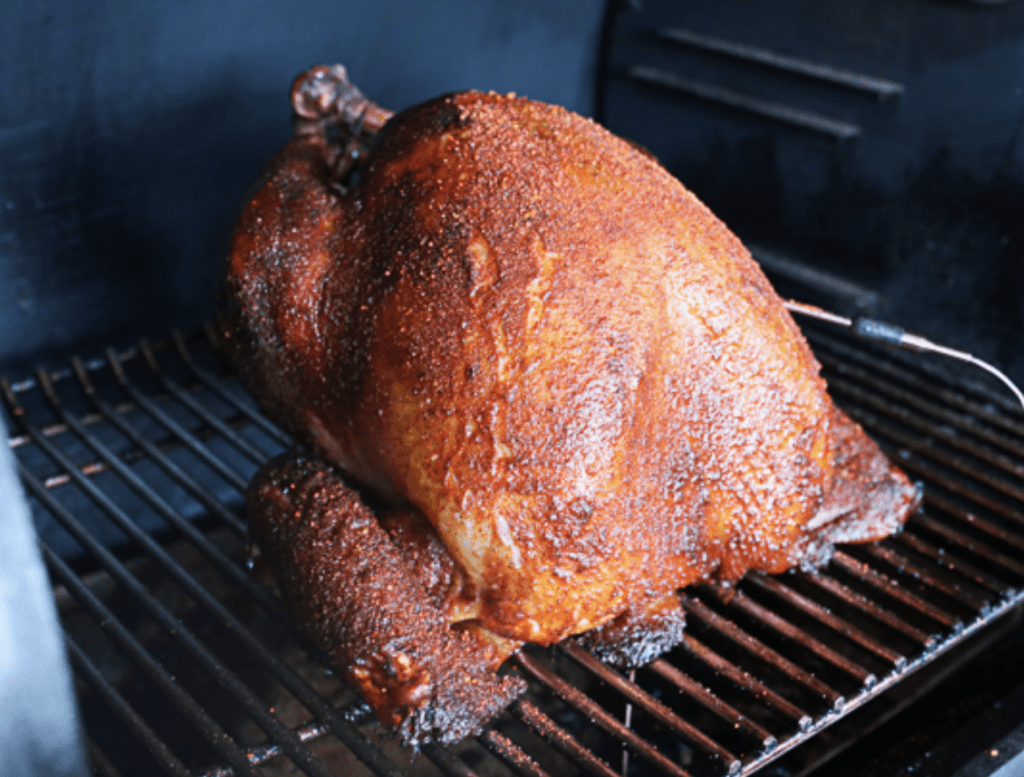
Smoked Turkey
This recipe maxes out the bird size as 15 pounds because it will take way too long to get out of the food safety danger zone (40-140 degrees F).
At that point bacteria can set in and spoil the turkey.
Shoot for the turkey finishing about 30 minutes prior to when you want to serve it.
You’d rather have it done a bit early, and cover with foil then have the other food waiting for the turkey to be done.
Prep The Turkey
Remove the neck and giblets from the cavity.
Pat the turkey dry with paper towels.
If you brined the bird, rinse off the brine with cold water prior to patting dry.
Stuff the turkey, if desired, and tie the legs together with kitchen twine.
Coat the turkey with olive oil and then generously coat with the BBQ Rub.
Prep The Smoker (Pellet or Electric):
Pre-heat the smoker to 225 degrees F and set up for indirect heat.
Load the smoker with your wood of choice and a drip pan full of water.
Prep The Grill (Gas or Charcoal):
Pre-heat the grill to 225 degrees F and set up for indirect heat. Aim to keep the temperature between 225 – 250 degrees F.
Gas Grill- turn half the burners (on the same side of the grill) to medium-low while the other burners are off.
Use a smoker box to add chips/chunks of wood to create a thin blue smoke.
Charcoal – Pre-heat the coals until just ashed over.
Dump them on the far side (either left or right) of your grill and open the vents to 25%.
Create smoke by placing wood chunks directly on the pre-heated coals.
Smoke The Turkey: Directly on The Grill/Smoker
Transfer the turkey to a pre-heated grill.
Cook for 30 minutes per pound at 225 degrees F, spritzing with the broth every 45-60 minutes.
When spritzing, check the drip pan to see if more water needs to be added.
Replenish the wood chips/pellets/charcoal, as needed, to maintain the temperature.
Smoke until the thickest part of the thigh reaches 165 degrees F.
Check the temperature on both legs and use the lower of the two temperature readings.
Cover the turkey with foil, if the skin starts getting overly dark.
Remove the turkey to a large cutting board and let rest for 15 minutes. If not serving right away, cover with foil and wrap with towels to keep in the heat until you’re ready to serve.
Remove the twine before carving and serving.
Pro Tips
Reserve the giblets and neck to make turkey gravy.
You can use butter, but oil creates a crispier skin.
Replace with any homemade or store bought spice mix you like.
If you don’t want to make homemade broth, we get it!!
Snag some store bought turkey or chicken broth instead.
What do You Stuff a Turkey With?
We don’t stuff anything in the big beast. We don’t notice the VERY slight flavor it may impart after smoking.
If you must, feel free to add some aromatics like rosemary and thyme or even garlic and onions.
Just don’t stuff it full as you need space for the air to circulate.
Feel free to brine it prior if that’s your thing (we use this turkey brine recipe).
Don’t try and make stuffing in the cavity and it won’t be finished cooking when the turkey is ready to be pulled.
What Type of Wood is Best For Smoking a Turkey?
What’s the Best Wood To Smoke Turkey?
Depends what you’re going for.
Cherry wood and apple wood are great options.
We enjoy Pecan when smoking poultry, but maple imparts a great sweet flavor as well.
If you prefer a stronger smoke flavor for your Thanksgiving Smoked Turkey, opt for hickory.
Whole Smoked Turkey Temperature
The thickest part of the leg should register 165 degrees F on a digital thermometer.
Take the temp on both sides of the birds (unless you’re using a rotisserie).
You’ll use the lowest temperature as the temperature.
We typically start measuring the temp about an hour before it’s suppose to be done, to avoid overcooking.
Each bird has a unique shape and size so this helps overcome these oddities.
What Do You Baste a Turkey With?
We make a batch of our Instant Pot Bone Broth and spritz the bird every hour or so.
You can use store bought turkey or chicken broth if you don’t want to make a homemade broth.
Grab a Substitute for beef broth or chicken broth substitute if you need to.
Skip basting if you brined the turkey.
Make sure to order a cheap water bottle if you don’t have one on hand for basting.
How Long Do You Smoke a Turkey?
A great guideline is 30 minutes per pound at 225 degrees F.
A 10 pound turkey should take about five hours.
If you’re smoking it at 250 degrees F, it will take about 25 minutes per pound.
America’s Top Thanksgiving Side Dishes >>
Thanksgiving Day Appetizers >>
Alternatives To Turkey For Thanksgiving >>
Best Movies To Watch On Thanksgiving >>

